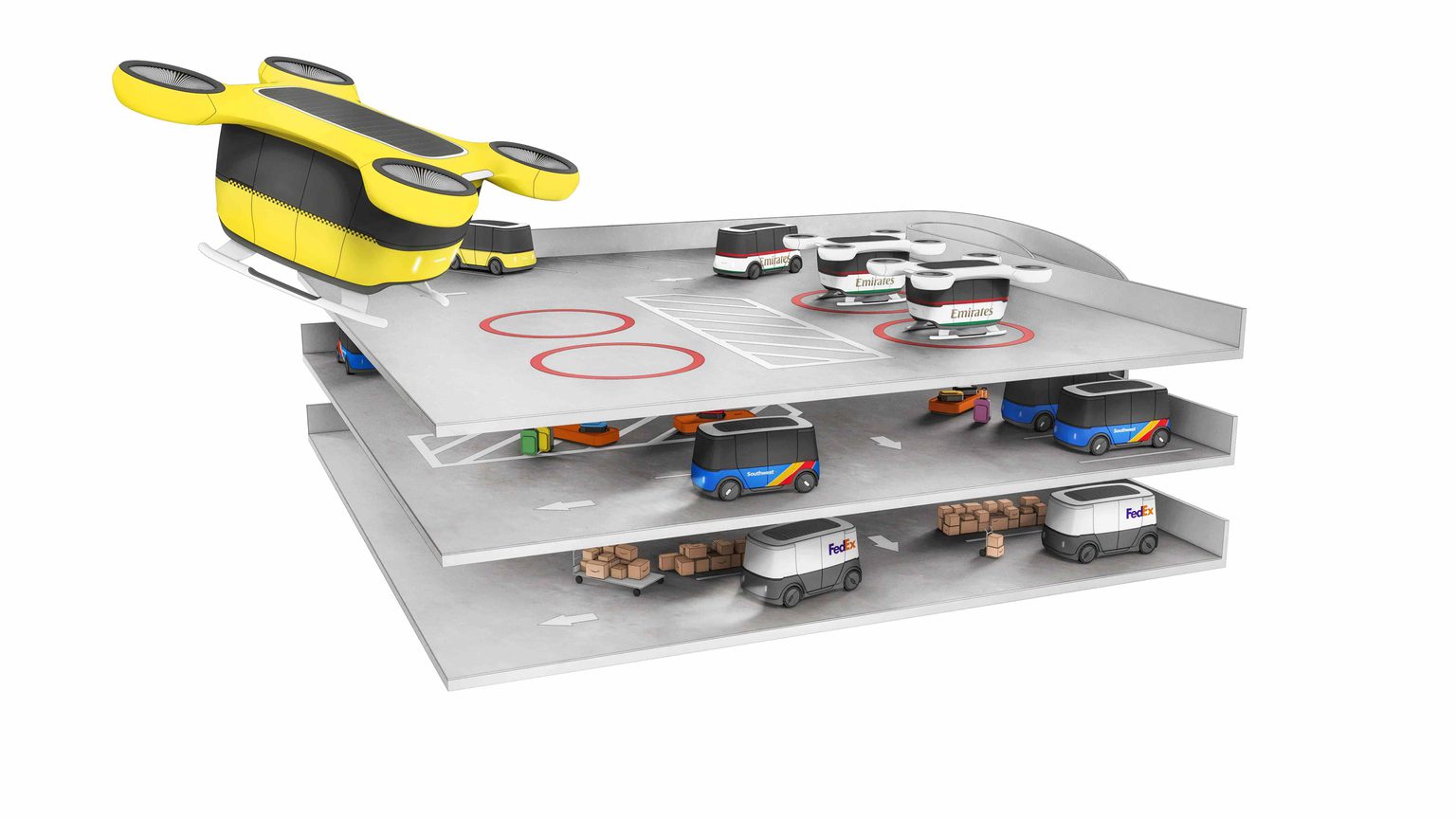
Mobility

Devin Liddell & Nick Ross

Devin Liddell
Principal Futurist

Nick Ross
Creative Director
Even the word “drone” is a tough sell. A continuous humming noise. Monotonous speech. A remote-controlled aircraft or missile. With definitions spanning bees and bombs, it’s understandable why the public may want more cowbell but doesn’t want more drone. Consider that, despite concerns about our potentially dystopian futures in the face of increasingly powerful machines and artificial intelligences, there are cute robots. But there are no cute drones. That’s because drones are mostly perceived to be within the territories of the military’s hunter-killer UAVs, nosey neighbors, and police departments exploring the constitutional limits of surveillance. That’s a troubling Venn diagram.
This is presently how the public perceives drones, but not the future. Already, drones are delivering medicines and vaccines to remote areas and transforming the collection of oceanographic data. While these are heralded as heroic use cases, they point to a future of everyday use cases. There is a chasm to cross, though. Drones working in far-flung locales—away from our windows and yards and kids—are one thing; drones as part of everyday urban life are quite another. Also, these everyday city drones will likely operate autonomously, putting pressure on governments to define how the public should expect to interact with them. So, there’s lots of work to be done, from conceiving of how drones can be useful to designing drones that are desired within the human fabric of a city.
The nexus of these two tasks is a principled approach to designing the future public life of drones. There’s an opportunity here to put forward the drone equivalent of Isaac Asimov’s Three Laws of Robotics. Why? Because, like any new technology, for every use case there’s an abuse case, a tension between the promise of a technology to do good and its danger to do harm. The application of principles, meaningfully expressed through design, is how these tensions are reconciled. Drones will need these organizing principles to lead productive public lives of good.
Here are three organizing principles for the future public life of drones as we see them now. There are, of course, scenarios that push these principles to their limits, which will only help us refine them moving forward.
Principle No. 1
Drones have the capacity for gaining unique vantage points, of seeing things from a more advantageous perspective. This also means they have the capacity to puncture reasonable expectations for privacy. For this reason, drones for cities are always observable, and never hidden. Note: In the United States, the Federal Aviation Administration’s Part 107 regulations specify that a drone operator must keep their drone within sight or have a visual observer monitoring through unaided sight. That’s fine for now, but future regulations for everyday urban drones operating autonomously will need to require that drones are visible to citizens wherever they’re operating.
PRINCIPLE NO. 2
Drones have established uses in law enforcement and military. But cities should be in the business of serving people—not targeting them. So drones for cities have missions that are always beneficial and never punitive.
PRINCIPLE NO. 3
Drones are well-suited for information-gathering missions. But concerns about personal privacy and even spatial jurisdictions are warranted. Therefore, when drones for cities collect data, it’s always about things and never about people. Note: In its existing Part 107 regulations, the FAA notes that it currently “does not regulate how [unmanned aircraft] gather data on people or property.” In the near future, smart cities will need to take the lead on this issue.
So, using these principles, what are some possible everyday drones we might see working in cities?
Traffic drones. Visible both on the ground via a mobile, ground-based base station, and above-grade through an airborne module. Works to give motorists dynamic traffic detouring and signaling, and can also provide cities with real-time traffic monitoring and congestion mitigation. A two-piece bot for adaptive infrastructure.
Gutter drones. Visible cleaning sidewalks and gutters. Works to keep pedestrian areas tidy and storm drains clear, all while compiling data sets on everything from litter types to sidewalk repairs. A get-dirty droid so every city can be as clean as Singapore.
Beach drones. Visible in the water as a friendly complement to lifeguards. Works to keep swimmers of all ages safe while continuously scanning for unseen hazards (like rip currents and sharks) and performing ongoing water-quality testing. A robotic watercraft so a lifeguard is always on duty.
This article was originally published in Fast Company magazine